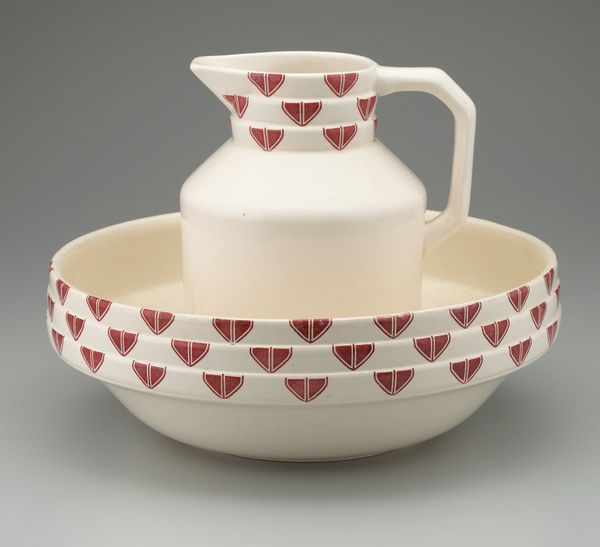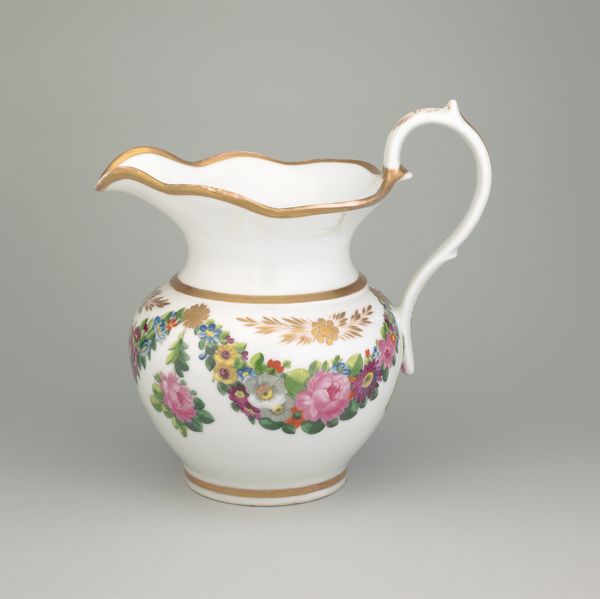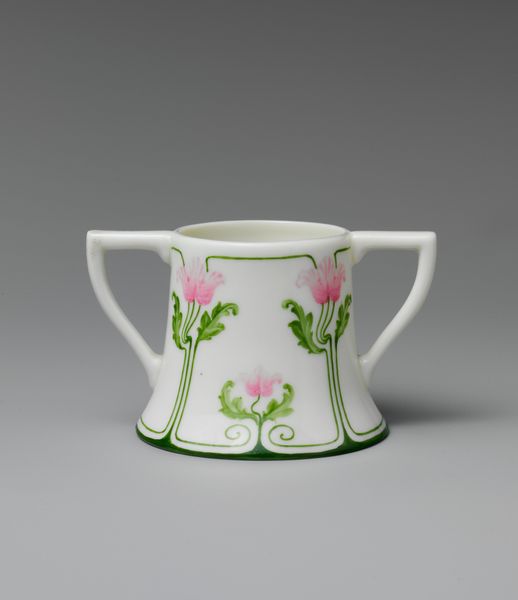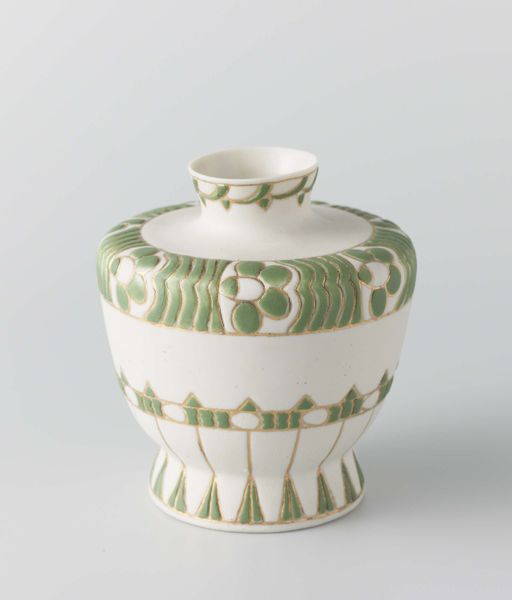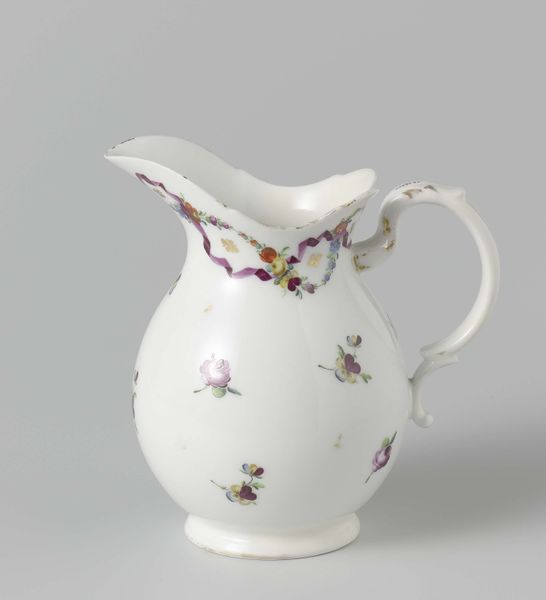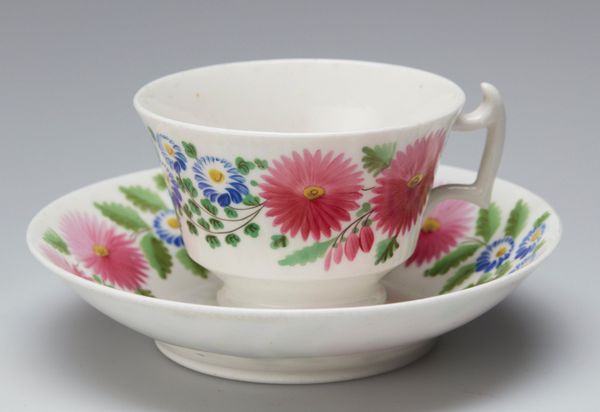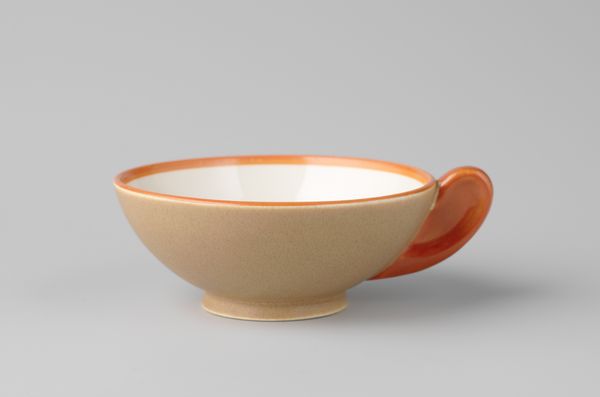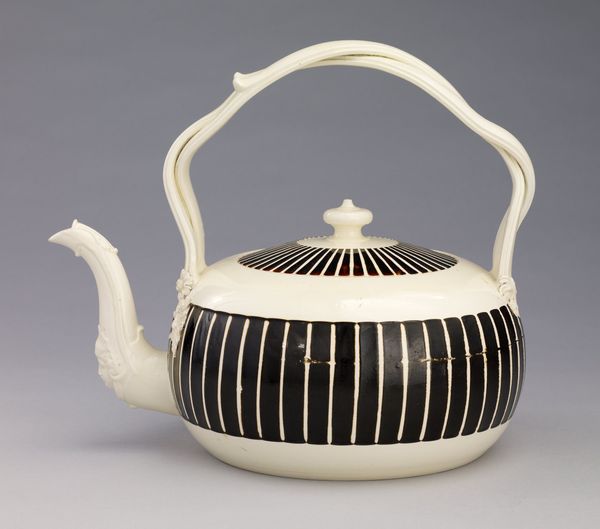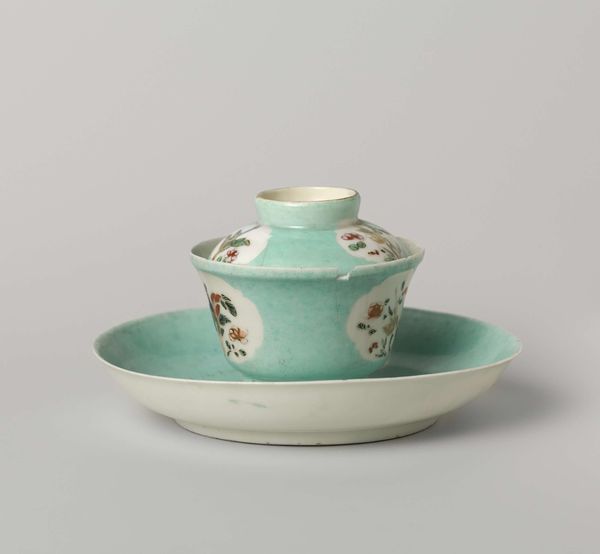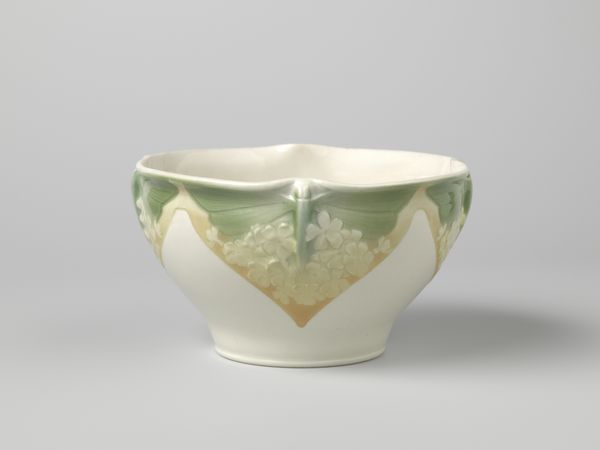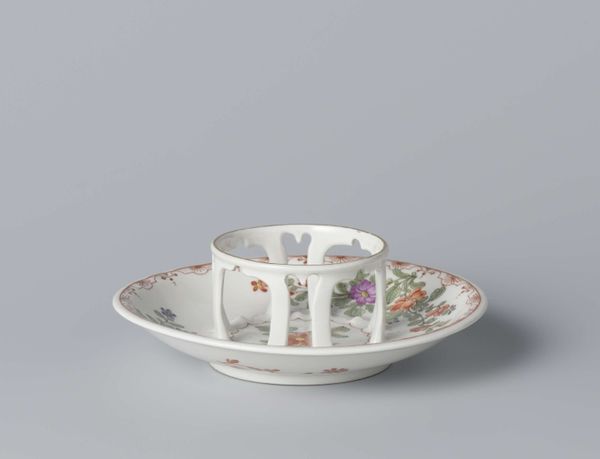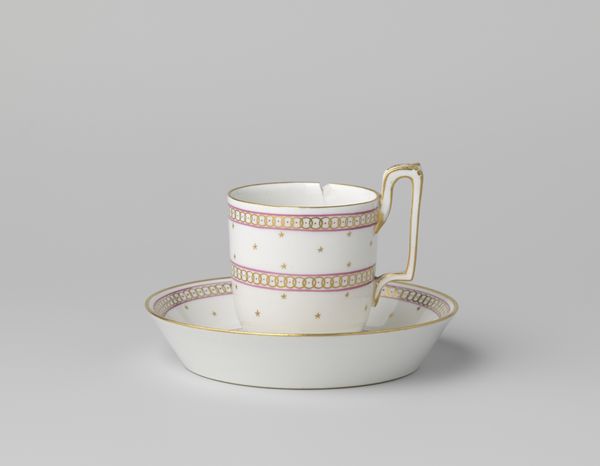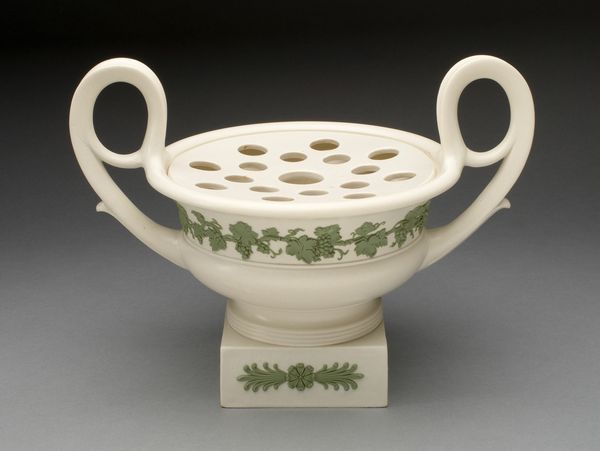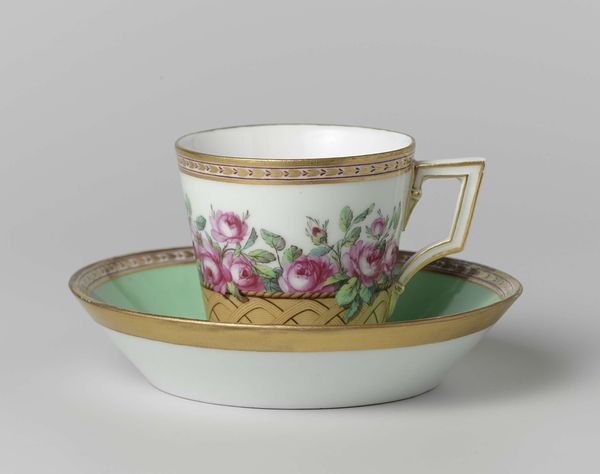
ceramic
#
art-nouveau
#
ceramic
Copyright: Public Domain
Editor: Here we have Josef Maria Olbrich's ceramic "Basin" from around 1902, currently held at the Minneapolis Institute of Art. I'm struck by its simplicity, the geometric shapes repeated in that rich, dark red, and the way the jug nestles in the basin. What stands out to you in terms of the artwork’s composition? Curator: It's the precise articulation of form that arrests my attention. Note the rigorous geometry governing the design; the repetition of the stylized motif functions as a rhythmic device, almost musical in its regularity. How do you see the colour operating within the composition? Editor: I see the dark red pattern popping against the pale white of the ceramic. It accentuates the shape of the jug and basin, giving a defined edge, and is an efficient use of contrast. What about the jug’s handle? Its lines seem sharp, and slightly angular. Curator: Precisely. That geometric quality reinforces the overall emphasis on structure. Notice the interplay of positive and negative space, and how each element contributes to the visual equilibrium. This approach encapsulates formal reduction to essential components, mirroring larger movements in the aesthetic sphere at the turn of the century. Does this functional origin contribute to the way we read its aesthetic merit, in your view? Editor: I do think the purpose, the intended use, affects how one understands its artistry, even down to its scale. Curator: Indeed. By focusing solely on form, color, and spatial relations, the object invites deeper exploration of its aesthetic principles, removing considerations beyond itself. Editor: It has certainly brought to my attention how much an object can reveal without knowing its context. Focusing on shape and line gives insight I wouldn’t have found otherwise. Curator: A rewarding perspective; one which permits new readings as visual styles evolve and fade.
Comments
No comments
Be the first to comment and join the conversation on the ultimate creative platform.
